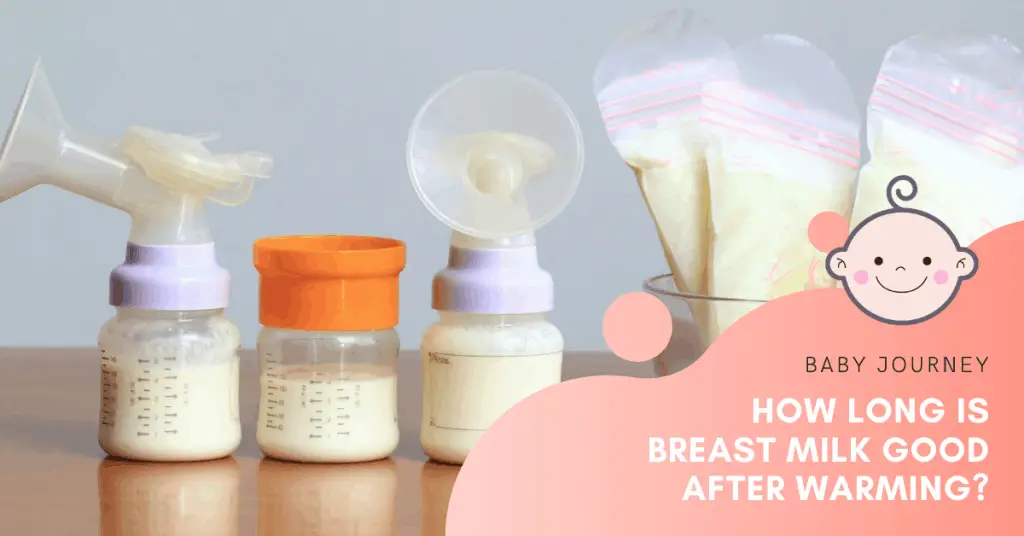A Common Worry of Mothers
At least once, a nursing mother may wonder how to increase milk supply. When you are breastfeeding it can be a common fear that you are not producing enough milk for your baby.
There are reliable ways to tell if you are underproducing and not so reliable ways, which we will cover. We will also go over the various methods of how to produce more breastmilk.
Milk Production and Low Supply
How is Breastmilk Produced?
Breastmilk production isn’t too complicated. Once nursing is established it is a relationship of supply and demand. When milk is expressed through nursing or pumping, it signals to your body to produce more milk.
Inside your breasts are many milk-making ducts. These ducts are controlled by hormones. The hormone prolactin signals breastmilk production. Milk is made from the proteins, sugars, and fats of the mother.
Hormones control breastmilk in the beginning, from about halfway through pregnancy until the hormones level off shortly after birth. Then, the demand of your baby’s appetite is responsible for stimulating milk production.
Milk removal is what determines how much milk is produced. In nursing moms, breastmilk is constantly being produced.
While milk removal is responsible for milk production, storage capacity plays a role in how often moms need to nurse or pump. Each mom has a different storage capacity and how much milk her lobules can hold is independent of breast size.
Moms with a smaller storage capacity will find themselves nursing more often while mothers with a larger storage capacity may need to nurse less often. If your breasts hold less, your baby may need to nurse more often to sustain them throughout the day. On the contrary, if your breasts have a high storage capacity, you may need to nurse less often.
However, ensuring that milk is regularly being removed drives production.

What Causes Low Milk Supply?
If you don’t remove milk from your breasts often, either through nursing or pumping, you may experience a low milk supply.
As a nursing mother, it is best to breastfeed on demand. Breastfeeding on demand keeps your milk expression and production on par with your baby’s appetite. During a growth spurt, they will naturally nurse more and for longer periods. This helps increase your supply to match their growing needs.
If you don’t breastfeed often enough, your supply may suffer. There are various reasons why some mothers may not breastfeed often enough.
- Supplementing with formula. While all new moms would like to sleep more and have a break now and again, supplementing with formula can hurt your supply. Some women also turn to formula versus breastmilk because they feel they aren’t producing enough to satisfy their baby. Without guidance from a lactation consultant, this can lead to a lower milk supply.
In the beginning, it is best not to supplement with formula unless advised. Nurse your baby as frequently as they demand. If someone else is going to give your baby a bottle, make sure you pump to make up for the missed nursing session.
- Too much pacifier usage. Many health professionals advise nursing moms to not give their baby a pacifier until they are at least six weeks of age. This is because babies have a natural desire to suck and all of this suckling helps to establish and maintain your breastmilk supply.
If you give your baby a pacifier too frequently you may miss valuable time having your baby at your breast, when they could be stimulating supply.

- Too short of feeding sessions. It can be hard to know how long to feed your baby, especially if they get fussy or tired at the breast. Switching sides too frequently can also be bad for your milk supply.
Your baby needs to nurse long enough to trigger a letdown reflex, which is when your milk ducts release the milk. This milk release is necessary for the supply and demand cycle of milk production.
- Bottle preference. If your little one prefers bottles, you may be tempted to give them one and either miss a nursing session or pump. Both options can lead to a lower supply.
Pumping isn’t as effective at maintaining breast milk levels, and as we know, not nursing frequently enough also hurts supply. It is best to try and always offer your breast first and frequently, and work with a lactation consultant if you need to.
- Baby falls asleep at the breast. If your child falls asleep too quickly to trigger your letdown reflex, or they fall asleep before removing enough milk, you may notice a drop in supply. There are a handful of techniques you can use to try and wake your child, such as cheek stroking or a diaper change.
If your little one has a hard time staying awake, be sure to try and keep them nursing as long as possible and wake them up if necessary.
- Tongue-ties and other health conditions. Tongue-ties can make it difficult to breastfeed, as can other health conditions. If your little one has such a condition, breastfeeding exclusively from the breast may not always be possible. To maintain your supply, you will likely have to pump.
- Breastfeeding mom’s health. Similarly, breastfeeding mom may also have health issues that affect her ability to breastfeed. Even common colds and the flu can hurt your milk supply. Do your best to stay hydrated and feed your baby or pump as often as possible.
- Baby only feeds from one breast each session. There is a lot of guidance about how long to nurse your child on each breast and when to switch sides. However, if your baby only nurses from one side during each session, you may notice a dip in supply.
After all, supply and demand are what controls milk supply so if one breast doesn’t have any milk removal each session you will probably see a decrease.
- Scheduled breastfeeding. Not nursing on demand can tank your supply. For your supply to match your child’s demand, you need to nurse them as often as they are hungry and for as long as they want to nurse. This is the only way to naturally boost your breast milk level as your child grows and maintain your supply.
11 Proven Ways On How To Produce More Breastmilk
If you think you have a low breastmilk supply, work with your child’s pediatrician and a lactation consultant. This will help you establish the root of the problem and help to find possible solutions.
#1 Breastfeeding position & latch
Sometimes, a poor latch or breastfeeding position may be to blame for a low milk supply. If you find the best position to feed your baby in which you are both comfortable, your nursing sessions may become more frequent and longer.
#2 On-demand breastfeeding
Breastfeeding on demand is great for your supply. You should nurse frequently for as long as your baby wants. This will help your supply to match their demand and also help make breastmilk fattier. Some moms take a breastfeeding vacation, which is essentially staying in and doing nothing but feeding their baby for an entire day or two.
#3 Switch between breasts
To help promote supply in both breasts, make sure that you are feeding on both of your breasts. You don’t have to set a time limit for each breast, but instead switch when your baby unlatches from feeding on one side. Then, alternate the breast that you begin each nursing session on.

#4 Longer breastfeeding time
Breastfeeding for longer can help increase your supply. Try to promote longer nursing sessions by keeping your child awake if they fall asleep at the breast. Also, do your best to eliminate distractions so that your baby stays relaxed and focused on feeding.
#5 Breastfeeding mother’s sleeping position
Sometimes, sleeping on your stomach as a nursing mom is not recommended. Compression of the breasts may limit production as well as being uncomfortable for the mother.
Try sleeping on your side or back if possible, and room share with your little one so that you can hear when they are hungry.
#6 Pump in between breastfeeding
Pumping with a breast pump in between breastfeeding is one of the most effective ways of how to increase breast milk supply. This is because the extra milk being removed signals to your body to produce more.

#7 Have adequate rest & a healthy diet
When considering how to increase milk production, pay attention to your health and wellness. Eat a variety of healthy foods, as breastfeeding moms generally need an extra 400-500 kilocalories a day to support supply recommends the CDC.
Also, try to get as much rest as possible. When your body functions at its best, breastmilk supply can also function at its best.
#8 Power pumping
Power pumping is another tried and true method of moms searching for the best way to increase milk supply. For this, you will need to use a good breast pump.
Also known as cluster pumping, power pumping serves to mimic how your baby will demand for milk when breastfeeding. To power pump, you will have to pump and rest alternately at a few intervals, ideally once a day.
#9 Keep hydrated
It is recommended that breastfeeding moms drink to thirst. This simply means to drink as much water or liquids as you need in order to not feel thirsty. A lot of liquid is needed to produce breastmilk so staying hydrated is vital.
#10 Limit pacifier & baby bottle use
As we learned, too much time on pacifier for breastfed baby can hide your baby’s hunger cues and limit time spent at the breast. Bottle use can also cause you to miss a nursing session, disrupting the supply and demand cycle. Try to avoid or limit these things if you are concerned about your supply.
#11 Avoid supplementing whenever possible
Similarly, supplementing will also mean that your little one is not nursing from your breast. When milk isn’t removed milk is not produced. Try to avoid supplementing if you can.
What to Avoid to Reduce Potential Poor Milk Supply
In addition to the items mentioned above, you should avoid excess caffeine, birth control pills, alcohol, and smoking when nursing. Not only can some of these things pass into your breastmilk and harm your baby, but they can also decrease supply.
Some medications, like antihistamines and decongestants, can also hurt your supply. Be sure to check with your doctor or pharmacist before taking any medication.
How Do I Know if I’m Producing Enough Milk for My Baby?
Signs of Milk Supply
There are a few ways in which you can tell if you are producing enough milk for your baby. If you are wondering how do I know if I’m producing enough milk, review these signs of milk supply:
- Baby’s poop & pee. Your child should achieve an adequate number of wet and dirty diapers for their age. This changes as they grow. For example, at one week your child should have six wet diapers compared to only two wet diapers when they are two days old. Keeping a log can help you track this.
- Baby’s reaction after feeding. While some babies are naturally fussier than others, their mannerisms after feeding can help give you information about your supply. If your child seems relaxed, satisfied, and isn’t showing hunger cues immediately after feeding you are likely producing enough.
- Baby’s weight. Doctors track your child’s weight closely. After birth, they will likely lose a little weight, and then they should start putting weight back on rather quickly. If they are meeting growth milestones and gaining appropriately you probably have a good milk supply.
- Baby’s milestones. Doctors also keep track of developmental milestones. If your child is alert, active, awake, and meeting these milestones your milk supply may be healthy.
Your child’s pediatrician will be key in helping you to diagnose poor supply issues and informing you how to boost milk supply if necessary. They will likely inform you if your child is not gaining weight properly or meeting milestones.
During the first few days to weeks, it is also necessary to keep track of your child’s wet and dirty diapers and inform your child’s doctor about the numbers.

Not Signs of Milk Supply
There are also unreliable ways to check for low breastmilk supply. These methods do not accurately indicate breast milk supply. These are not signs of milk supply:
- How your breasts feel. As your milk supply regulates, your breasts will no longer feel engorged or full, this is normal. Just because your breasts feel empty does not mean they are. Your breasts are constantly producing milk, even during and immediately after a feeding.
- Feeling the letdown reflex. Some women do not feel a letdown reflex or do not feel it as strongly, while others moms do. This is normal. Even though you can’t feel your letdown, cues like your baby’s sucking pattern and gulping indicate a letdown occurred.
- Frequency of nursing. Babies can want to nurse more frequently for a variety of reasons like a growth spurt or for comfort. Also, some moms have a lower breast milk storage capacity, which means their child will nurse more often to meet their daily intake goals.
Just because your little one wants to nurse more often does not mean your supply is dwindling.
- Amount of milk you pump. Babies are much more effective at removing milk from the breasts than a pump. Some women don’t respond well to the pump and do not pump nearly as much milk as their child receives while nursing.
How much milk you pump is not a good indicator of how much milk you are making or how much milk your little one gets while breastfeeding.
- Baby is waking during the night. Night waking is normal behavior for infants and doesn’t always indicate low supply. Many older babies like to nurse back to sleep more for comfort than hunger, therefore night waking isn’t a reliable supply indicator.
These methods are not accurate indicators of your breastmilk supply. You should refer to more reliable methods to check your supply and discuss your concerns with your baby’s pediatrician or a lactation consultant.
Checking Your Supply and Remedying Issues
If you are wondering how to increase breastmilk supply, it is a good sign to review the reliable methods and unreliable methods of checking for low supply.
If you think you have a low supply, work with your baby’s pediatrician and a lactation consultant to get to the root of the problem. Then, you can try the various methods listed to boost your supply for your little one.
Do you have a go-to trick to increase your breast milk supply? Tell us in the comments!
Also, if you find this guide helpful, help us spread the word!
—




